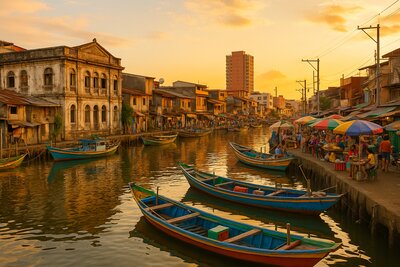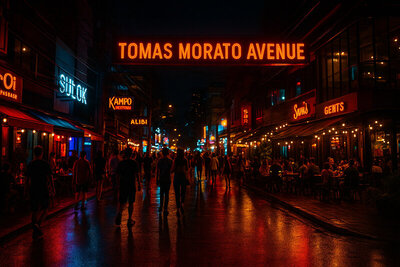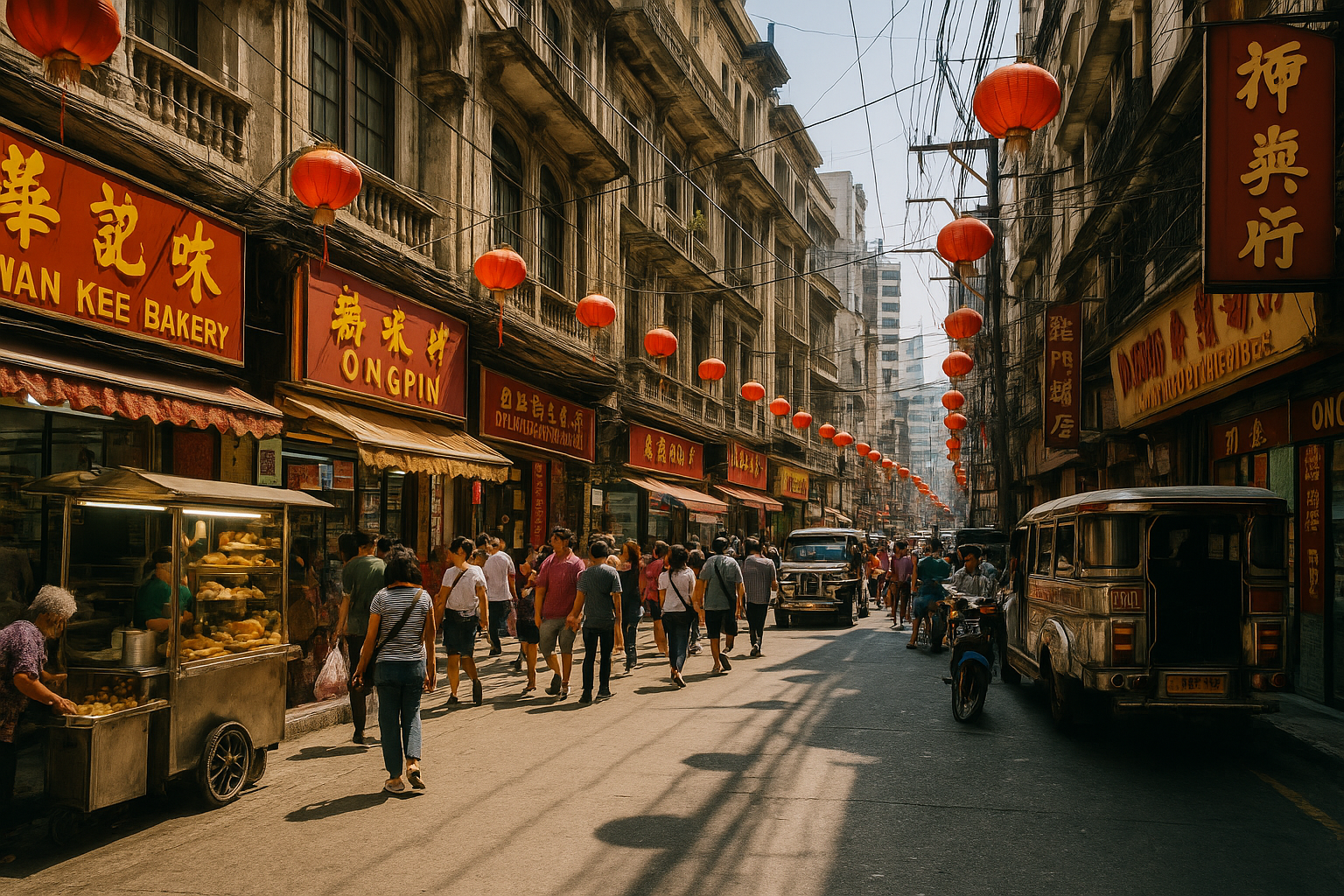
Binondo is one of Asia's oldest Chinese communities, where centuries of tradition seamlessly blend with modern Manila commerce.
The Birth of a Community
When Spanish colonizers established Binondo in 1594, they created it as a permanent settlement for Chinese traders who had converted to Christianity. The location was strategic--near the Spanish seat of power in Intramuros but separated by the Pasig River, allowing the colonial authorities to maintain control while accommodating the growing Chinese population that was essential to Manila's commerce.
The neighborhood takes its name from the Filipino word binundok, meaning 'like a mountain.' Over time, Chinese immigrants converted to Catholicism, intermarried with indigenous Filipino women, and had children who became the Chinese mestizo community. This blending of cultures created a unique Filipino-Chinese identity that defines Binondo to this day.
For centuries, Binondo served dual roles--a residential community for Chinese-Filipinos and a commercial district that became Manila's financial hub. While modern developments have shifted some financial activity to Makati and BGC, Binondo remains an important commercial center, particularly for wholesale trade and small businesses.
Historic Landmarks
The Minor Basilica and National Shrine of San Lorenzo Ruiz, commonly known as Binondo Church, stands as one of the neighborhood's most significant landmarks. Founded by Dominican priests in 1596 as a gift to the Sangleys--Chinese people who converted to Christianity--the church has witnessed over four centuries of Binondo's history. Named after San Lorenzo Ruiz, the first Filipino saint and a Chinese-Filipino from Binondo, the church represents the deep integration of Chinese and Filipino Catholic traditions.
The Manila Chinatown Arch in Plaza Moraga marks Binondo's entrance with impressive scale. Standing 63.8 feet high, this structure is said to be the world's largest Chinatown arch. Inaugurated on June 23, 2015, the arch has become an iconic photo spot and symbol of Filipino-Chinese heritage, welcoming visitors into the historic district.
Throughout Binondo, Taoist temples stand alongside Christian churches, creating a unique religious landscape that reflects the community's diverse spiritual traditions. These temples serve as both places of worship and cultural centers, preserving Chinese religious practices that have been maintained across generations.
A Foodie's Paradise
While Binondo was once better known as a financial hub, it has emerged in recent decades as a foodie's paradise. The concentration of authentic Chinese-Filipino restaurants, bakeries, and food stalls makes Binondo an essential destination for anyone serious about Manila's culinary scene.
Ongpin Street and Escolta Street form the heart of Binondo's dining scene. These historic thoroughfares are lined with restaurants serving generations-old recipes, bakeries producing traditional pastries, and food stalls offering quick bites that locals have loved for decades.
Toho Panciteria Antigua claims the title of the Philippines' oldest restaurant, with origins dating back to 1888. This historic diner continues serving authentic Chinese cuisine that has satisfied diners for over a century. The longevity of establishments like Toho speaks to Binondo's ability to preserve culinary traditions while the city modernizes around it.
Other notable dining destinations include Shanghai Fried Siopao, famous for their generous meat-filled buns; Wai Ying, serving Cantonese specialties; and Masuki, known for their exceptional mami (Filipino-Chinese noodle soup). Cafe Mezzanine offers a glimpse into old Manila cafe culture, while Lord Stow's Bakery brings Portuguese egg tarts to Chinatown. Sincerity Cafe & Restaurant rounds out the options with traditional Chinese coffee shop fare.
The Binondo Food Crawl Experience
The best way to experience Binondo's food scene is through a food crawl--moving from restaurant to restaurant, sampling specialties along the way. This approach allows visitors to try multiple establishments in one visit, experiencing the breadth of Chinese-Filipino cuisine that Binondo offers.
A typical food crawl might include dim sum for breakfast, fresh tikoy (rice cake) from a street vendor mid-morning, authentic Chinese noodles for lunch, a stop at a traditional bakery for hopia (bean-filled pastry), and ending with a full dinner at one of the neighborhood's renowned restaurants. Many visitors join organized food tours led by guides who share the stories behind the food and the neighborhood's history.
Street Life and Commerce
Binondo's streets pulse with commercial energy. Shops selling everything from traditional Chinese herbs and tea to textiles and electronics line the sidewalks. Wholesale dealers operate from aging buildings, continuing trade practices that have defined Binondo for generations. Street vendors sell snacks and small goods, adding to the bustling atmosphere.
The neighborhood is home to about 20,000 people who live above shops, in residential buildings, and in pockets of housing throughout the district. This residential presence ensures Binondo remains a living community rather than just a commercial zone or tourist destination.
Eclectic street art has appeared in recent years, adding contemporary color to historic streets. These murals often blend Chinese and Filipino imagery, reflecting the cultural fusion that defines Binondo.
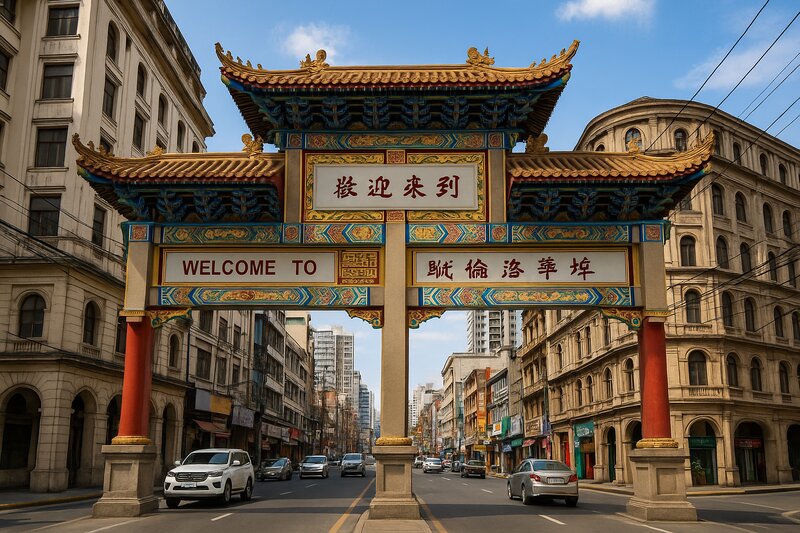

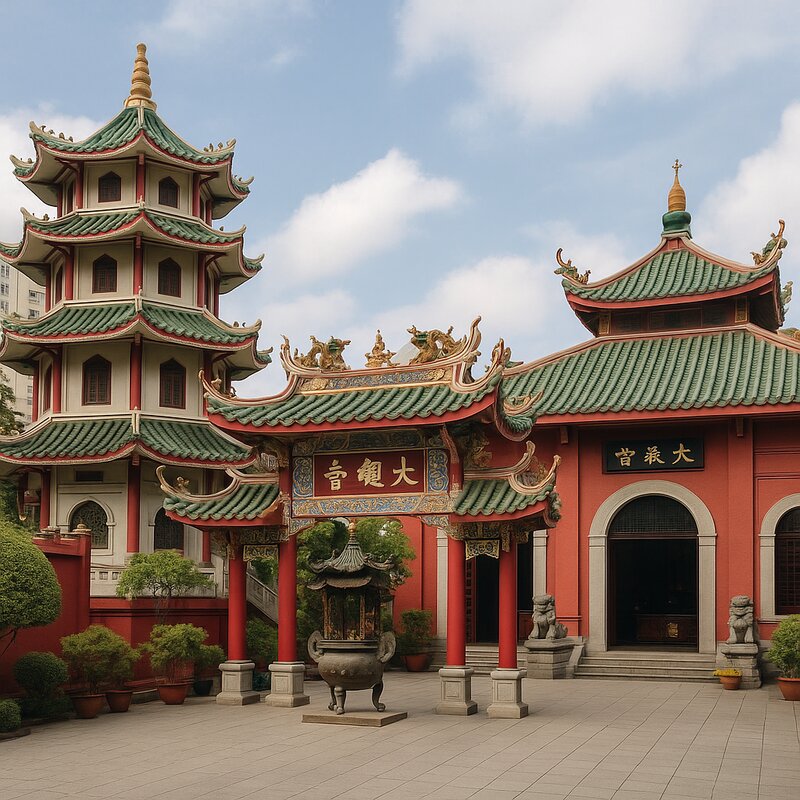

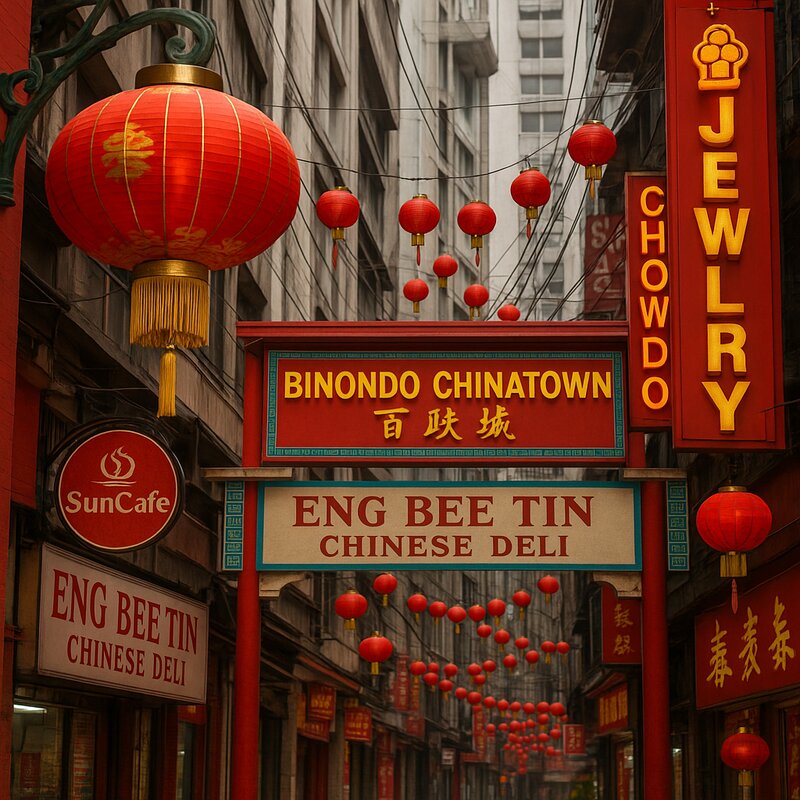
Visiting Binondo
Binondo is accessible via multiple routes. The LRT-1 Carriedo station provides direct access to the heart of the neighborhood. Jeepneys, buses, and ride-sharing services all serve the area. For those driving, parking can be challenging, particularly on weekends and during Chinese New Year celebrations.
The neighborhood is best explored on foot. Comfortable walking shoes are essential, as sidewalks can be crowded and uneven. Visiting during weekday mornings offers a more relaxed experience, while weekends showcase Binondo at its busiest and most vibrant.
Chinese New Year transforms Binondo into a festival destination, with dragon dances, firecrackers, special foods, and crowds that fill the streets. This annual celebration offers the most immersive experience of Binondo's Chinese-Filipino culture.
Binondo's Living Heritage
What makes Binondo special is its authenticity. This isn't a recreated heritage district or a sanitized tourist attraction--it's a living, working neighborhood where traditions have been maintained through centuries of change. The Chinese-Filipino families who've operated restaurants for generations, the temples where prayers are still offered, the shops conducting business in the same buildings their grandparents used--these elements combine to create a neighborhood with genuine cultural continuity.
As the world's oldest Chinatown, Binondo offers more than just good food and historic sites. It provides a window into how cultures blend, how communities preserve identity across generations, and how neighborhoods can maintain character despite urban pressures. Whether you're seeking authentic Chinese-Filipino cuisine, exploring Philippine history, or simply experiencing a part of Manila that feels distinctly different from the modern business districts, Binondo delivers a uniquely rich experience.
